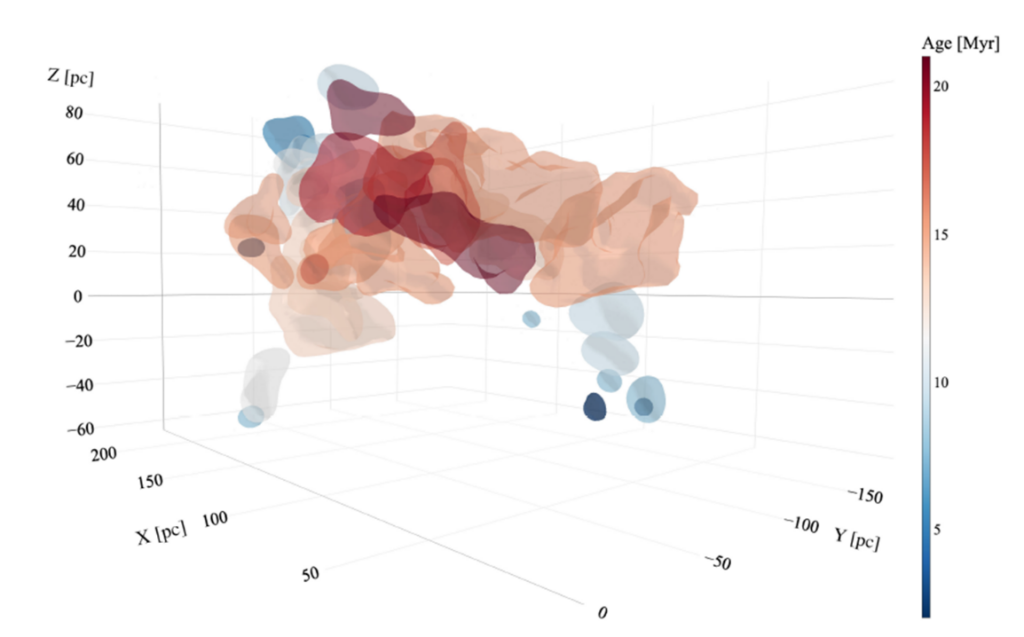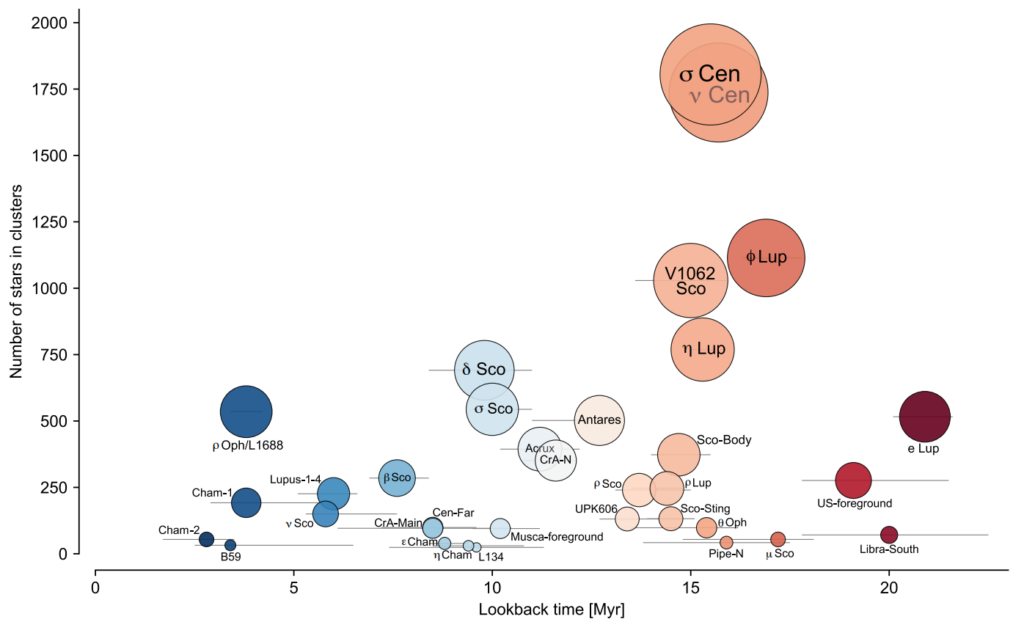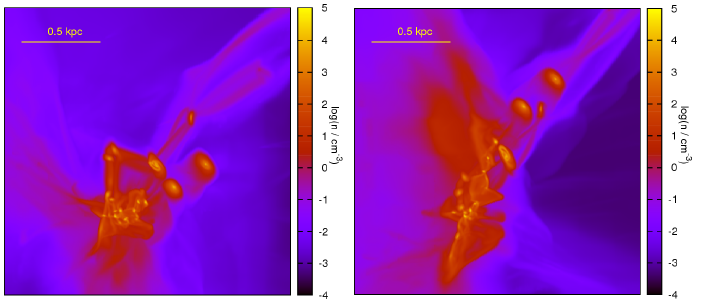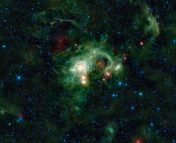Guest Author: Jiayi Yang
I’m a fourth year undergraduate student at Central Washington University interested in astrophysics and cosmology. I’m currently working on a meteor monitoring project. In my free time, I like drawing, playing video games, and spend time with my cat.
Authors: Sebastian Ratzenböck, João Alves, Josefa E. Großschedl, Núria Miret-Roig, Stefan Meingast, Martin Piecka, Laura Posch, Alena Rottensteiner, and Cameren Swiggum
First Author’s Institution: University of Vienna, Department of Astrophysics, Türkenschanzstraße 17, 1180 Vienna, Austria
Status: To be submitted to A&A
Understanding how stars form is a complex process, and reconstructing a star-forming region’s history is essential to gain insights into this. By examining when and where different sub-populations of stars form, we can learn about the basic physical mechanisms driving star formation. With this motivation, a group of astrophysicists at the University of Vienna revealed the star formation history of the Scorpius-Centaurus association (Sco-Cen).
The Sco-Cen association is the nearest OB association to the Sun. It is a perfect place to study how stars, planets, and clusters form and grow (a cluster refers to a group of stars, galaxies, or other celestial objects that are gravitationally bound together). In this research, Ratzenböck and his group used the Significance Mode Analysis algorithm (SigMA), a statistical algorithm used in astrophysics to separate astrophysical signals from noise in astronomical data, to derive the robust ages for the 37 stellar Sco-Cen clusters.
Ways to ask for age
Getting accurate ages for each cluster is crucial for the goal of creating a high-resolution age map of Sco-Cen. Scientists want to find tiny differences in age between clusters and need precise age estimates to do that.
Scientists can estimate the age of star clusters by comparing their properties to model isochrones. In astrophysics, an isochrone is a curve that represents a theoretical relationship between the age and the properties of a group of stars, such as their luminosity and temperature. Astrophysicists can therefore use isochrones to understand how old different groups of stars are by comparing their brightness and color with the model isochrone curves. Younger groups of stars will show different brightness and color properties than older groups of stars. However, confidently constraining the age of a stellar population is no easy task, and so the authors test a variety of models and fitting techniques to limit their uncertainties.
How old are the clusters?
In the end, scientists presented isochronal ages for the 37 stellar clusters in Sco-Cen (three of the clusters were excluded because they were too old or kinematically unrelated).

Figure 1 shows the distribution of the 34 clusters in Sco-Cen, with colors indicating their ages. This cool 3D plot gives us insight into how the group was formed, with older clusters at the center and younger ones on the outskirts. We can also see patterns of age gradients across clusters.
From Figure 2, which is colored in the same way as Figure 1, we can clearly see that Sco-Cen has been creating small clusters of less than 250 stars nonstop since it formed 20-25 million years ago, but the big clusters of over 1000 stars only formed during the peak of star formation about 15 million years ago. Nowadays, the majority of the stars and clusters we see in the area were made during that time, and since then, star formation has slowed down. These peaks of star and cluster formation appear to happen on a regular basis (every roughly 5 million years).

Why this pattern?
Zucker et al. (2022) propose that the first supernovae occurred about 14 million years ago at the center of the Local Bubble, which coincides well with the burst of star formation that formed the biggest clusters in the association (the peak at around 15 Myr in Figure 2 – note that this plot depicts the look-back time, i.e., the time elapsed since the event). The powerful supernovae shock waves from the most most massive stars in the older clusters could therefore have triggered this burst of star formation by compressing the surrounding gas. These supernovae could have also helped to fuel the expansion of the Local Bubble. The most massive stars from these older clusters are the likely cause of this feedback. However, it remains unclear what sparked the initial star formation about 20 Myr ago in Sco-Cen.
To sum up, this study’s findings, along with previous research on supernovae, strongly suggest that triggered star formation played a significant role in the formation of stars and clusters in Sco-Cen. But why every 5 million years? Scientists have not found a confirmed answer to it – maybe 5 is Sco-Cen’s favorite number.
Astrobite edited by Lucie Rowland
Featured image credit: ESO




